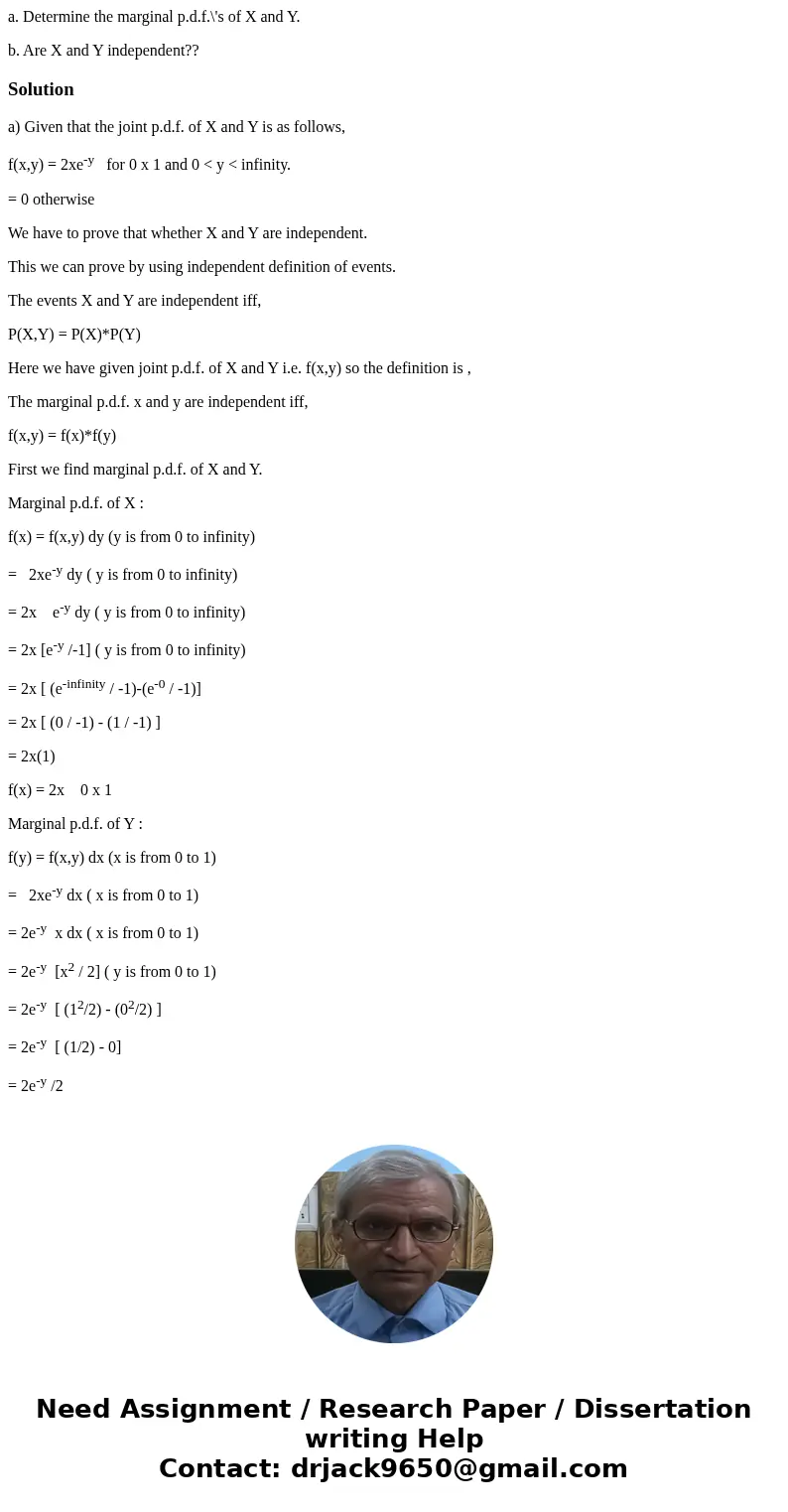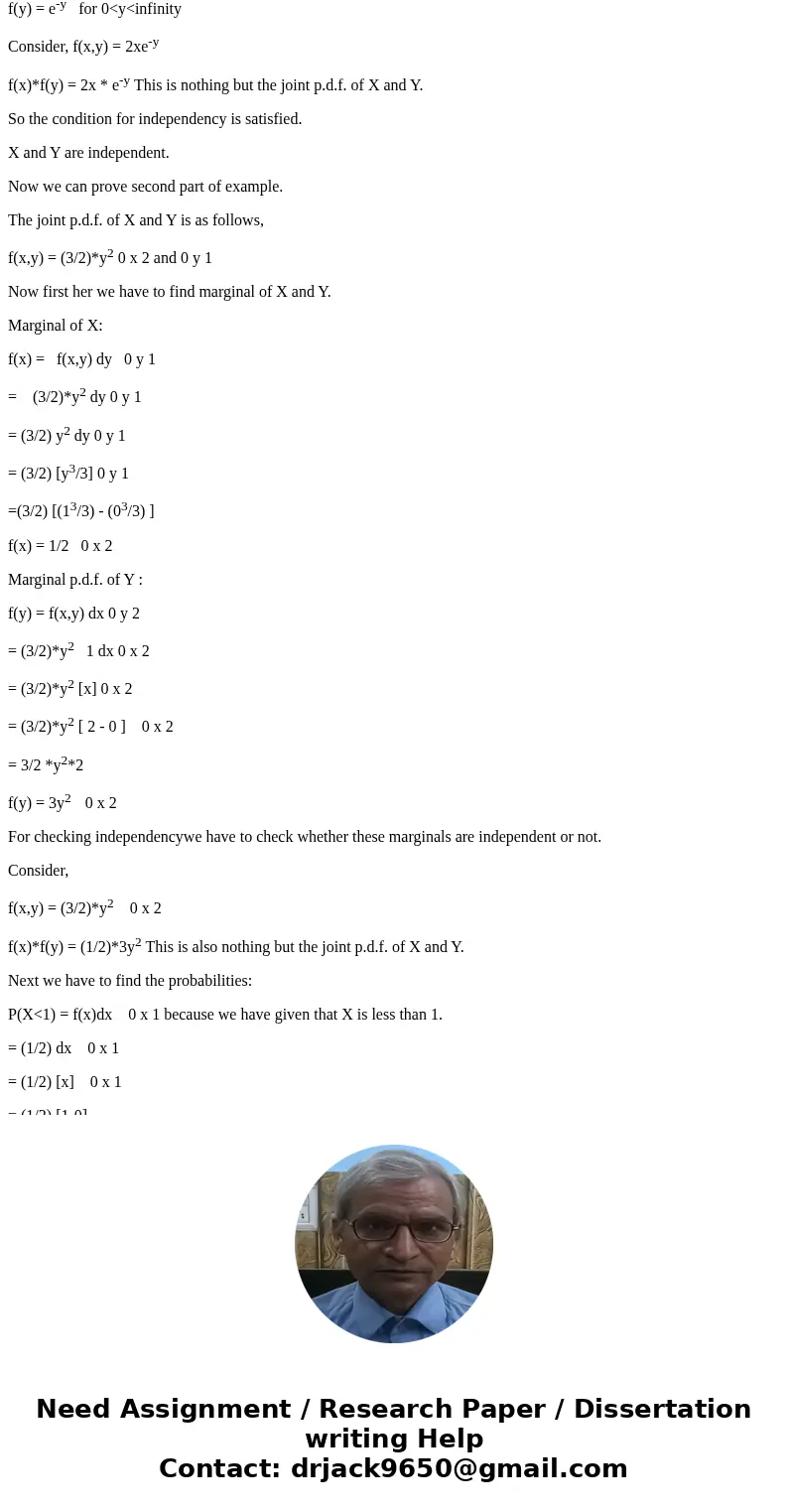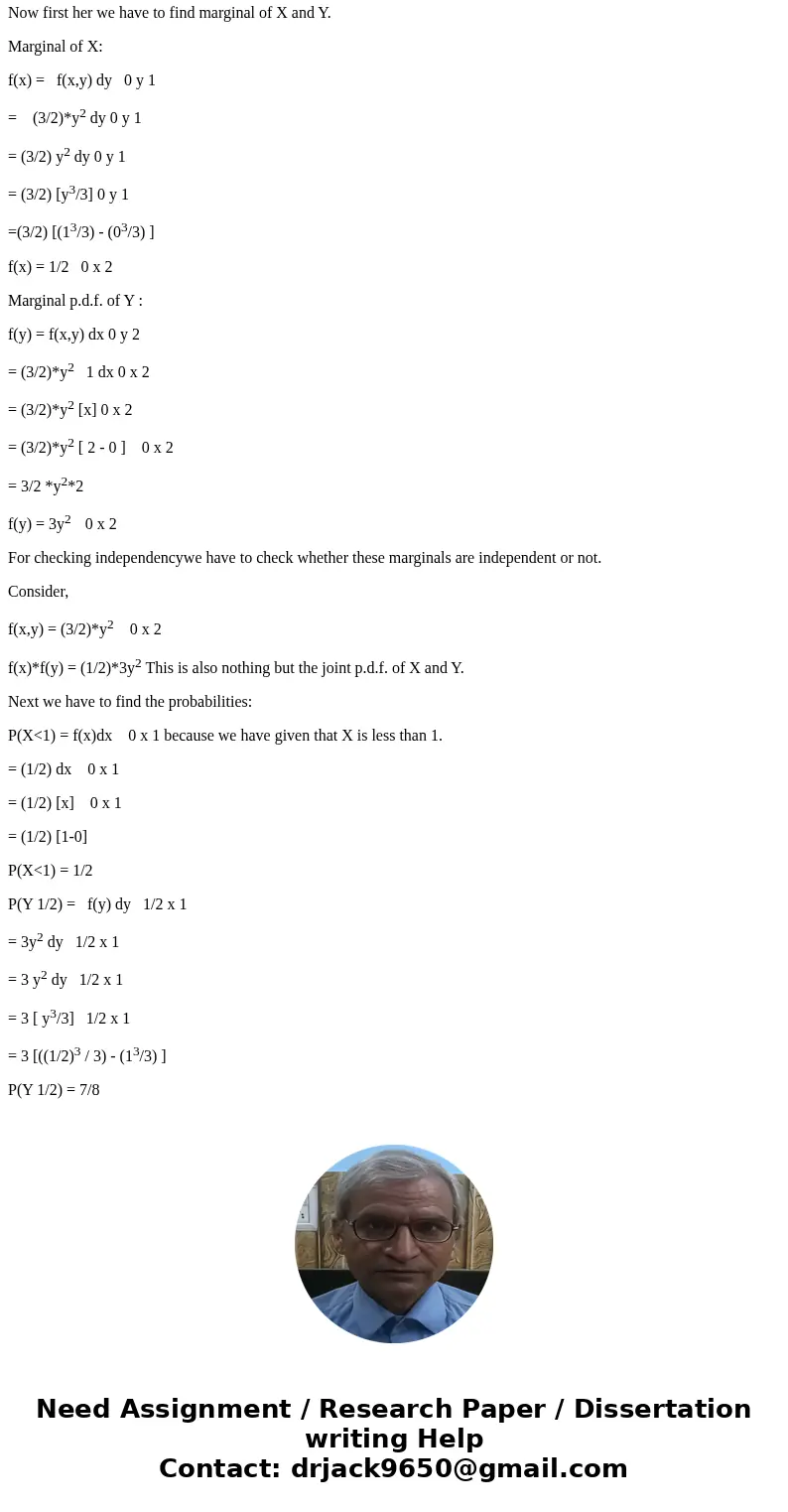a Determine the marginal pdfs of X and Y b Are X and Y indep
a. Determine the marginal p.d.f.\'s of X and Y.
b. Are X and Y independent??
Solution
a) Given that the joint p.d.f. of X and Y is as follows,
f(x,y) = 2xe-y for 0 x 1 and 0 < y < infinity.
= 0 otherwise
We have to prove that whether X and Y are independent.
This we can prove by using independent definition of events.
The events X and Y are independent iff,
P(X,Y) = P(X)*P(Y)
Here we have given joint p.d.f. of X and Y i.e. f(x,y) so the definition is ,
The marginal p.d.f. x and y are independent iff,
f(x,y) = f(x)*f(y)
First we find marginal p.d.f. of X and Y.
Marginal p.d.f. of X :
f(x) = f(x,y) dy (y is from 0 to infinity)
= 2xe-y dy ( y is from 0 to infinity)
= 2x e-y dy ( y is from 0 to infinity)
= 2x [e-y /-1] ( y is from 0 to infinity)
= 2x [ (e-infinity / -1)-(e-0 / -1)]
= 2x [ (0 / -1) - (1 / -1) ]
= 2x(1)
f(x) = 2x 0 x 1
Marginal p.d.f. of Y :
f(y) = f(x,y) dx (x is from 0 to 1)
= 2xe-y dx ( x is from 0 to 1)
= 2e-y x dx ( x is from 0 to 1)
= 2e-y [x2 / 2] ( y is from 0 to 1)
= 2e-y [ (12/2) - (02/2) ]
= 2e-y [ (1/2) - 0]
= 2e-y /2
f(y) = e-y for 0<y<infinity
Consider, f(x,y) = 2xe-y
f(x)*f(y) = 2x * e-y This is nothing but the joint p.d.f. of X and Y.
So the condition for independency is satisfied.
X and Y are independent.
Now we can prove second part of example.
The joint p.d.f. of X and Y is as follows,
f(x,y) = (3/2)*y2 0 x 2 and 0 y 1
Now first her we have to find marginal of X and Y.
Marginal of X:
f(x) = f(x,y) dy 0 y 1
= (3/2)*y2 dy 0 y 1
= (3/2) y2 dy 0 y 1
= (3/2) [y3/3] 0 y 1
=(3/2) [(13/3) - (03/3) ]
f(x) = 1/2 0 x 2
Marginal p.d.f. of Y :
f(y) = f(x,y) dx 0 y 2
= (3/2)*y2 1 dx 0 x 2
= (3/2)*y2 [x] 0 x 2
= (3/2)*y2 [ 2 - 0 ] 0 x 2
= 3/2 *y2*2
f(y) = 3y2 0 x 2
For checking independencywe have to check whether these marginals are independent or not.
Consider,
f(x,y) = (3/2)*y2 0 x 2
f(x)*f(y) = (1/2)*3y2 This is also nothing but the joint p.d.f. of X and Y.
Next we have to find the probabilities:
P(X<1) = f(x)dx 0 x 1 because we have given that X is less than 1.
= (1/2) dx 0 x 1
= (1/2) [x] 0 x 1
= (1/2) [1-0]
P(X<1) = 1/2
P(Y 1/2) = f(y) dy 1/2 x 1
= 3y2 dy 1/2 x 1
= 3 y2 dy 1/2 x 1
= 3 [ y3/3] 1/2 x 1
= 3 [((1/2)3 / 3) - (13/3) ]
P(Y 1/2) = 7/8



 Homework Sourse
Homework Sourse